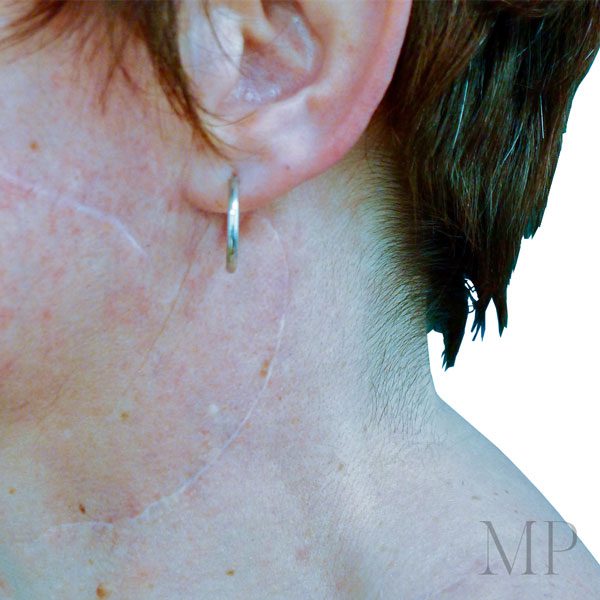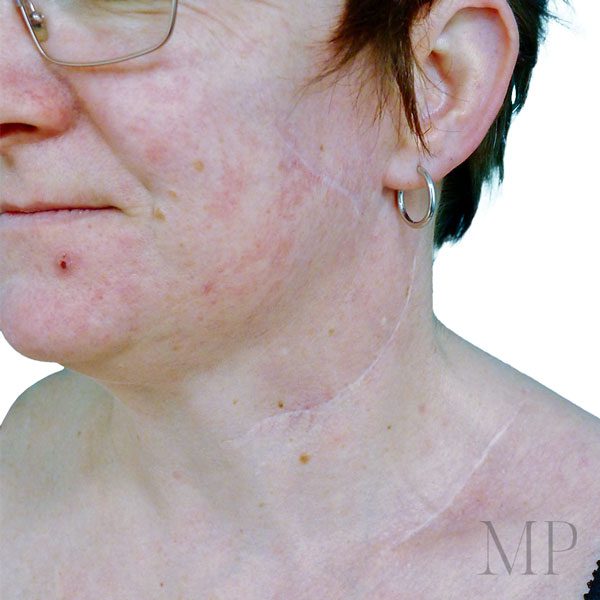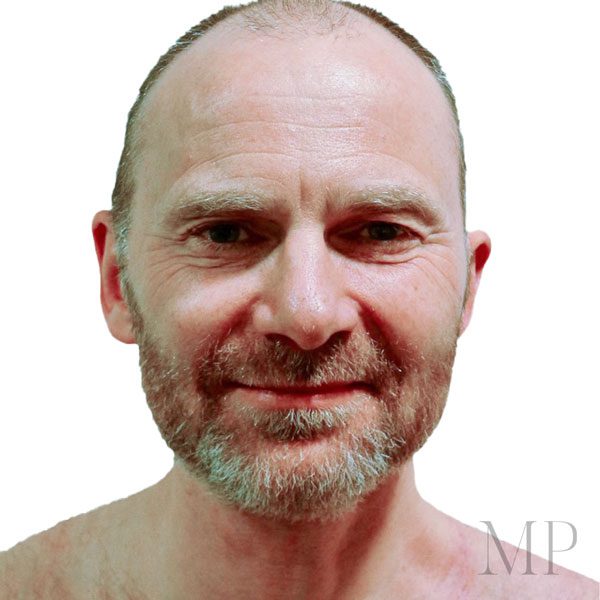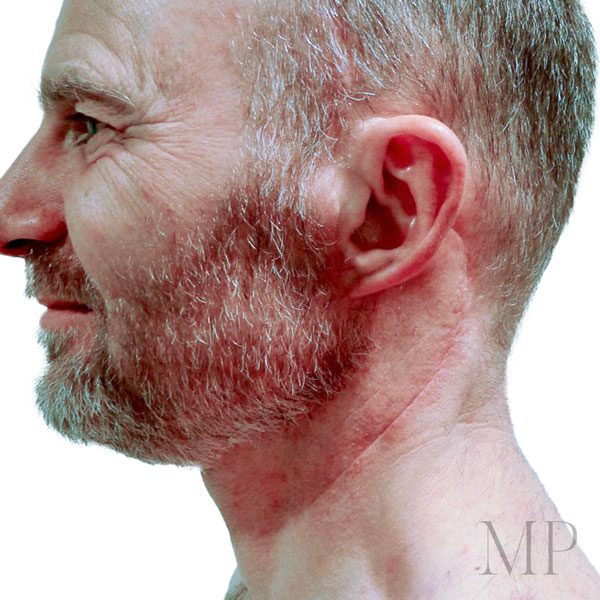Head & Neck
Skin tumours of the head and neck rarely spread. If this does occur this primarily is to the to the lymph glands that lie within the neck and in front of the ear. This spread tends to occur well before any spread to the blood and organs. Local control of skin cancer is therefore the key.
These glands are found within the Parotid gland. This is a gland in front of the ear and within the neck from the jaw bone to the collar bone. The removal of such glands (Lymphadenectomy) Mr Potter performs to potentially prevent the further spread of the tumour and decrease the chance of the tumour recurring within the neck.
Mr Potter has undertaken over 150 head and neck lymph node dissections for patients with a spread of skin cancer. He undertakes on average one every other week.
After a standard parotidectomy and neck dissection the patient is left with a defect and hollow in the cheek that is noticeable. This area is also likely to have skin that noticeably perspires when eating or feeling hungry (Frey’s Syndrome).
Mr Potter developed a technique that uses a flap of tissue that fills the defect to minimise the cosmetic deformity. This also aims to minimise or stop the sweating patients commonly experience following this procedure. We therefore undertake this at the time of the dissection.
Scars that are noticeable following a neck dissection are vertical scars. With this in mind Mr Potter uses where possible horizontal parallel scars that lie within normal skin folds. This markedly minimises noticeable scarring after the procedure.

Total number of neck dissections with or without a superficial parotidectomy undertaken for metastatic skin cancer
158
Return to theatre rate
1/158 = 0.6%
Nerve injury
0%
Stroke
0%
Haematoma (collection of blood within the operative site needing a return to theatre)
0.6%
Mortality
0%
Chyle leak (leak of fat from a duct in the neck)
0%
Average length of stay
8 days
PE/DVT rate
0%



